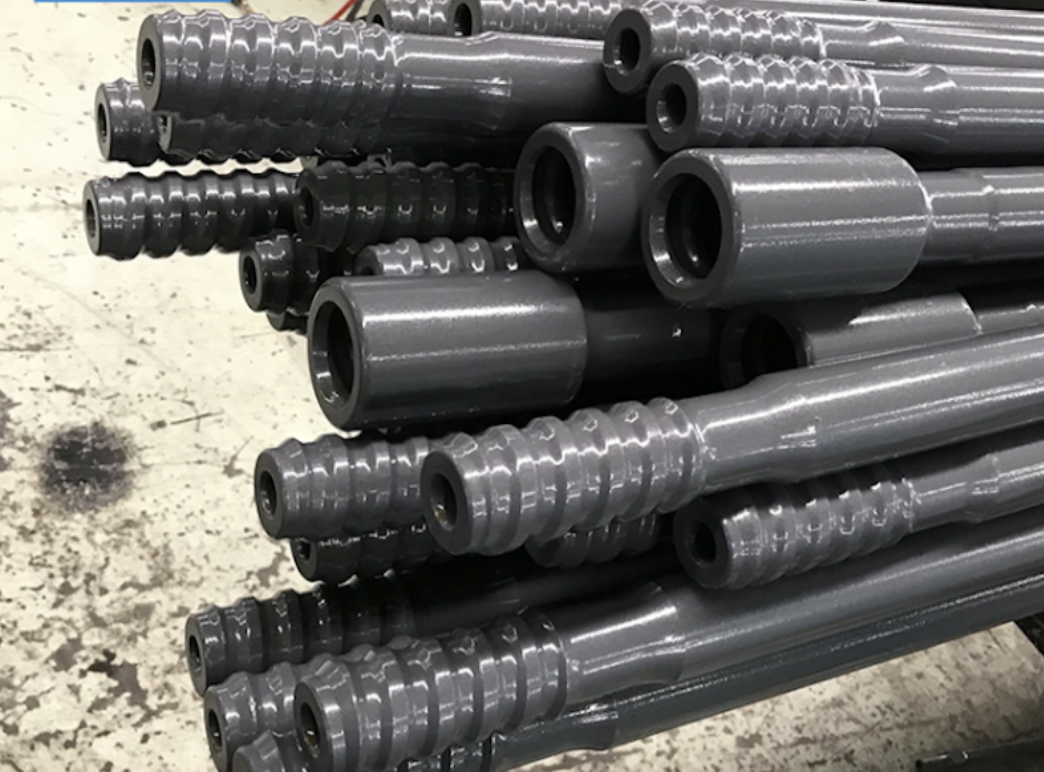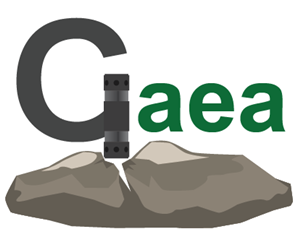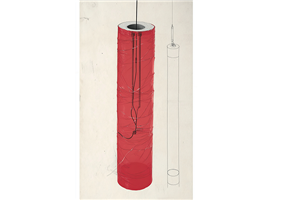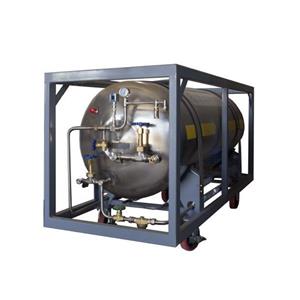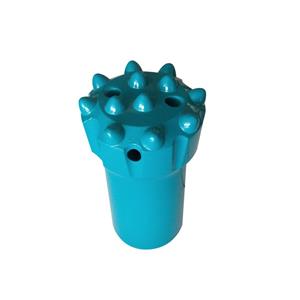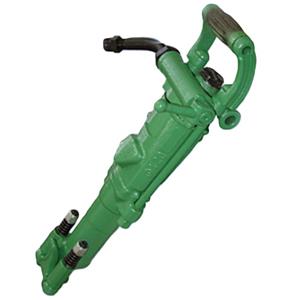Failure Analysis and Proper Use of Rock Drilling Tools
Failure analysis of rock drilling tools China now produces a range of rock drilling tools (RDT) with distinct features—such as column/insert-tooth bits, cemented-carbide integral bits, ultra-tough rock bits, and K610 carbide—whose quality and life have improved but remain inconsistent. Early failures are mainly due to bit and drill-rod problems.
Bits fail by abnormal and normal wear: fragmenting, tooth breakage, tooth loss, chipping and fractures. Chisel-type bits often fail because the cutting wings are too thin, wear quickly, have poor geometric stability, and insufficient clamping of carbide inserts—leading to insert loss and accelerated wear. Spherical/button bits typically suffer from edge spalling, fractured edge teeth, cracking in the skirt, cap loss and waist (body) fractures. A field study using a 7655 pneumatic drill on hard granite found for domestic ∅40–∅42 insert-tooth bits: edge-tooth spall 22.7%, edge-tooth breakage 35.4%, and fragment loss 26.4%—showing that edge tooth damage is a dominant failure mode. Causes include eccentric and uneven stress on edge teeth, differing radial pressures, increasing plastic deformation of the tooth hole wall (leading to a bell-mouth and reduced clamping force), insufficient interference fit between tooth and hole, and low bit-body hardness. Higher bit-body hardness benefits carbides far more than medium/low hardness bodies. Welding quality, flux performance, welding practice and usage also affect failures. More than 80% of bit-body fractures occur at the junction of the bit face and skirt; partial fractures of insert-tooth bits propagate along the tooth-hole bottom. Poor steel selection, inappropriate geometry, improper manufacturing or incorrect use also exacerbate fractures.
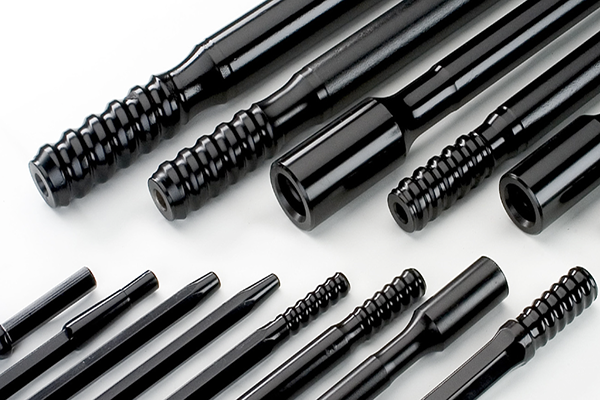
Drill rods endure alternating stresses—impact, bending and corrosion—so they require high fatigue strength, impact toughness, corrosion resistance, and low notch sensitivity and crack-propagation rates. Rod failures include deformations at the small-rod shank end due to low hardness, bursting of high-hardness ends, thread wear at couplings, fatigue breaks and brittle fractures. Fatigue breaks initiate and propagate from material defects (nonmetallic inclusions, porosity, white spots, scratches, decarburization, corrosion cracks) or from poor material/heat treatment (overhard core from carburizing, poor quenching causing tail cracks, quench cracks). Design flaws and poor coupling fit can induce cracks; misuse (hammer marks, poor joint lubrication, corrosion) also causes cracking and breakage. Some rod fractures show no fatigue features and present as bright, crystalline brittle fractures—usually from defects, severe section changes, forging laps, or improper heat treatment producing low strength or high stress concentration and rapid crack propagation.
Correct and rational use of rock drilling tools 2.1 Improve design quality Determining reasonable structural parameters and developing new types are prerequisites to longer life. For insert/column-tooth bits, hemispherical crowns give high drilling speed and durable compressive resistance. Tooth diameter should ensure tensile strength and clamping strength. To reduce edge-tooth damage and extend life: (1) reinforce edge teeth by choosing proper tooth shape, diameter and exposure height; (2) reduce edge-tooth rake angle to improve load distribution and impact resistance; (3) select correct weld gaps and interference fit to increase retention force; (4) use tougher, heat-treated carbides for edge teeth to prevent fragmentation; (5) strengthen the bit body to improve wear resistance; (6) optimize tooth layout, increase number of edge teeth where possible, and improve flushing—retain face water holes and a large-gap three-groove/two-hole flushing system to raise cuttings removal, reduce regrinding of cuttings, lower energy consumption and extend bit life.
Improve rod geometry: e.g., Ingersoll-Rand’s full-thread rods produced by roll-forming with surface hardening, larger helix angle and good self-locking improve toughness, wear resistance and ease of assembly/disassembly. Enhance appearance and packaging design to protect tools and extend service life.
2.2 Select high-quality materials Tool materials should be tough and wear-resistant, with good rigidity, high fatigue strength, low notch sensitivity, strong carbide retention and some corrosion resistance. Recommended steels include: 24SiMnNi2CrMo (similar to Swedish FF710) with excellent combined mechanical and fracture properties; 40SiMnMoV for rods (average penetration ~1225.4 m, close to foreign levels); 55SiMnMo for small rods approaching Swedish 95CrMo small-rod life (~250 m); 35SiMnMoV achieving ~300 m per rod. These steels, after quench–tempering, form bainitic microstructures with high fatigue toughness. For insert-bonded small and medium bits, 40MnMoV is suitable for the bit body; for hot-mounted insert bits, 45NiCrMoV is preferable. Carbide selection must match rock mechanics and drill type.
2.3 Adopt advanced manufacturing technology Using machining to produce bits—replacing traditional forging—is a key development. For welded insert bits, use proper heating equipment (ultrasonic frequency or medium-frequency induction furnaces) or full induction heating to prevent oxidation and decarburization, ensure controllable short heating times, ease brazing, and avoid quench stresses by controlling cooling. Increase weld size appropriately, choose graded grinding wheels, and thoroughly clean welding surfaces with organic solvents to improve brazing quality.
For insert fixation, hot-mounting is recommended for medium and large diameters: it minimally affects bit-body and carbide properties, preserves surface quality, produces two-axis compressive stress states at the joint, provides good retention and reduces fragment loss, and allows optimal steel heat treatment. Cold-pressed inserts require high machining accuracy—use high-precision tooling, short dimensional chains to boost contact stiffness and tooth-hole surface quality. Tooling geometry should allow larger cutting deformation and extrusion strengthening so the hole wall acquires beneficial compressive residual stress and a strain-hardened surface layer.
To increase rod life, manufacture precision forging and machining dies to prevent bell-mouths, flash or cracks. Improve hollow steel rolling quality to eliminate dents, scabs, folds and decarburization.
Conclusion This paper analyzed RDT failure modes and examined bit structures and damage forms, demonstrating causes of failure and proposing life-extension measures: proper structural parameters, quality material selection and advanced manufacturing techniques. Tool life, however, depends on inherent quality and scientific usage. Additional practical points: use pullers rather than hand hammering when removing bits; regrind bits to reduce surface crack initiation and growth and to improve drilling speed; follow correct operation—advance slowly until the bit has entered the rock before full-speed drilling; ensure rod couplings are concentric and threads fully engaged; if a bit sticks, avoid hammering—close the inlet valve, open water, advance slowly and use back-and-forth movements to smooth the borewall and free the tool, preventing carbide fragmenting, shank breakage or rod fracture.
In summary, using matched drills, dedicated tools and appropriate machines under various conditions will allow RDT to reach their potential performance.
